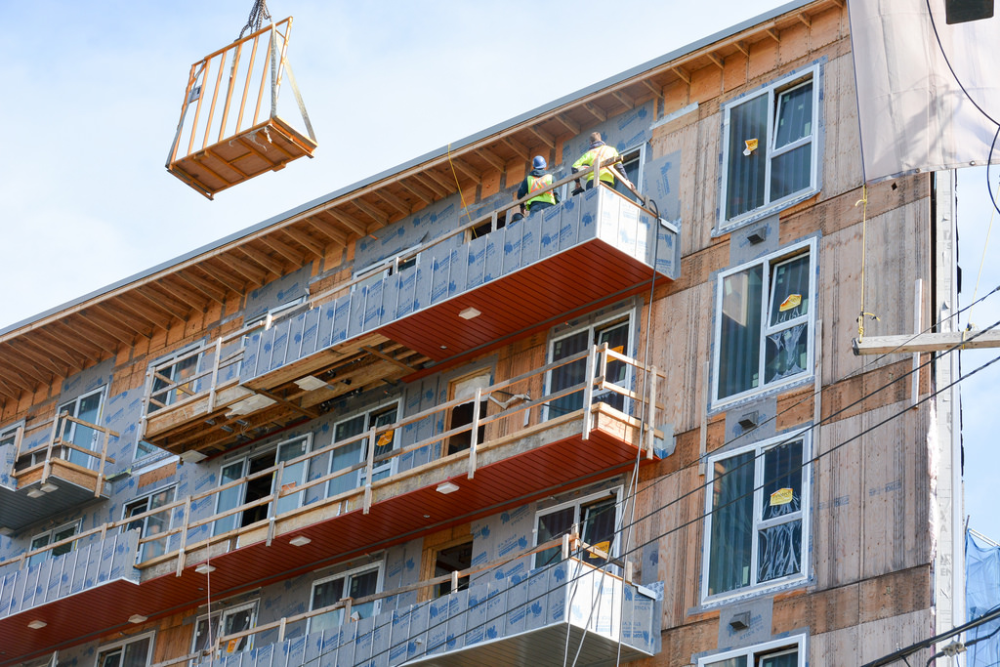In less than 10 years, near-zero emissions homes and buildings will be the new normal in Vancouver. We think the city's Zero Emissions Building Plan will serve as a blueprint for the rest of B.C. and beyond. In addition to reducing emissions and energy use, the plan will lead to improvements in the quality of homes and buildings. This plan will be an important catalyst in the local, clean, low-carbon economy.
Builders in Vancouver have already incorporated a near-zero emissions approach to their projects. For example, the Passive House standard, the leading standard for energy efficient buildings with near-zero emissions is rapidly being adopted in Vancouver. Twelve projects are currently in development around the city, totaling more than half a million square feet of floor space.
Throughout B.C., from Fort St. John, to Bella Bella, to Smithers and around the world, buildings are being constructed to Passive House standards. The total number of Passive House units in North America has quadrupled in the last year from 500 to over 2,000 units.
The difference in such buildings is notable; they are draft-free, soundproof, have warm floors, moderated summer temperatures and fresh, filtered air. These are the results of incorporating simple elements such as extra insulation, high-quality windows, and ventilation systems that recover heat into the buildings and eliminate heat losses to the outside. This also means far less energy is needed to heat these homes. Energy bill savings in these homes are so impressive that heating bills can be reduced to as little as $60 per year.
Currently in B.C. there are over 10,000 "green" homes and buildings, built to a higher standard of energy efficiency, including Passive House. Over 23,000 jobs in constructing new buildings and upgrading existing homes exist in this sector. Vancouver's plan will grow these job numbers.
In response to increasing interest in and demand for tradespeople and professionals to build near-zero emissions buildings, the School of Construction and the Environment at British Columbia Institute for Technology (BCIT) is offering certificates and master's degrees in areas such as building energy modeling and building science to advance construction skills, knowledge and innovation in the building sector. Recently, BCIT launched its new High-Performance Building Lab.
Students will have a hands-on venue to practice and perfect techniques required to build high-performance envelopes, such as constructing super insulated walls, eliminating points of air leakage and testing air tightness. This practical know-how will be highly coveted in the expanding market in Vancouver -- and elsewhere -- for energy efficient buildings. BCIT's High Performance Building Lab is a critical piece in supporting government and industry leadership in delivering energy efficient buildings that are an important part of the climate solution.
The market for low emissions energy efficient homes and buildings is well underway abroad. The European Union passed a directive in 2010, requiring that all new buildings be nearly zero energy by the end of 2020. In the U.S., the state of California, and cities like Boulder and New York have committed to similar targets by 2030.
In Canada, Vancouver is not alone in this move to near-zero emissions buildings. All levels of government across Canada are putting in place policies that will shift our communities and our economies to low carbon, including the way we build and heat our homes and buildings.
B.C.'s new Climate Leadership Plan sets a goal for new buildings to be net-zero ready by 2032; by 2030 all new buildings in Ontario will be net-zero ready. We expect the federal government to echo similar intentions under the national climate strategy to be revealed this fall.
As other governments wrestle with how to make good on commitments to reduce greenhouse gas emissions, Vancouver has laid down a plan that will result in higher quality homes and buildings, boost the economy, and accelerate us farther along the path to low carbon. We're proud to be part of this leading edge of the low-carbon economy.
Rob Bernhardt of Bernhardt Contracting is a builder and homeowner.
Jennie Moore is associate dean of building design and construction technology at the British Columbia Institute of Technology.
Karen Tam Wu is director of the buildings and urban solutions program at the Pembina Institute.
This article originally appeared in the The Huffington Post.






